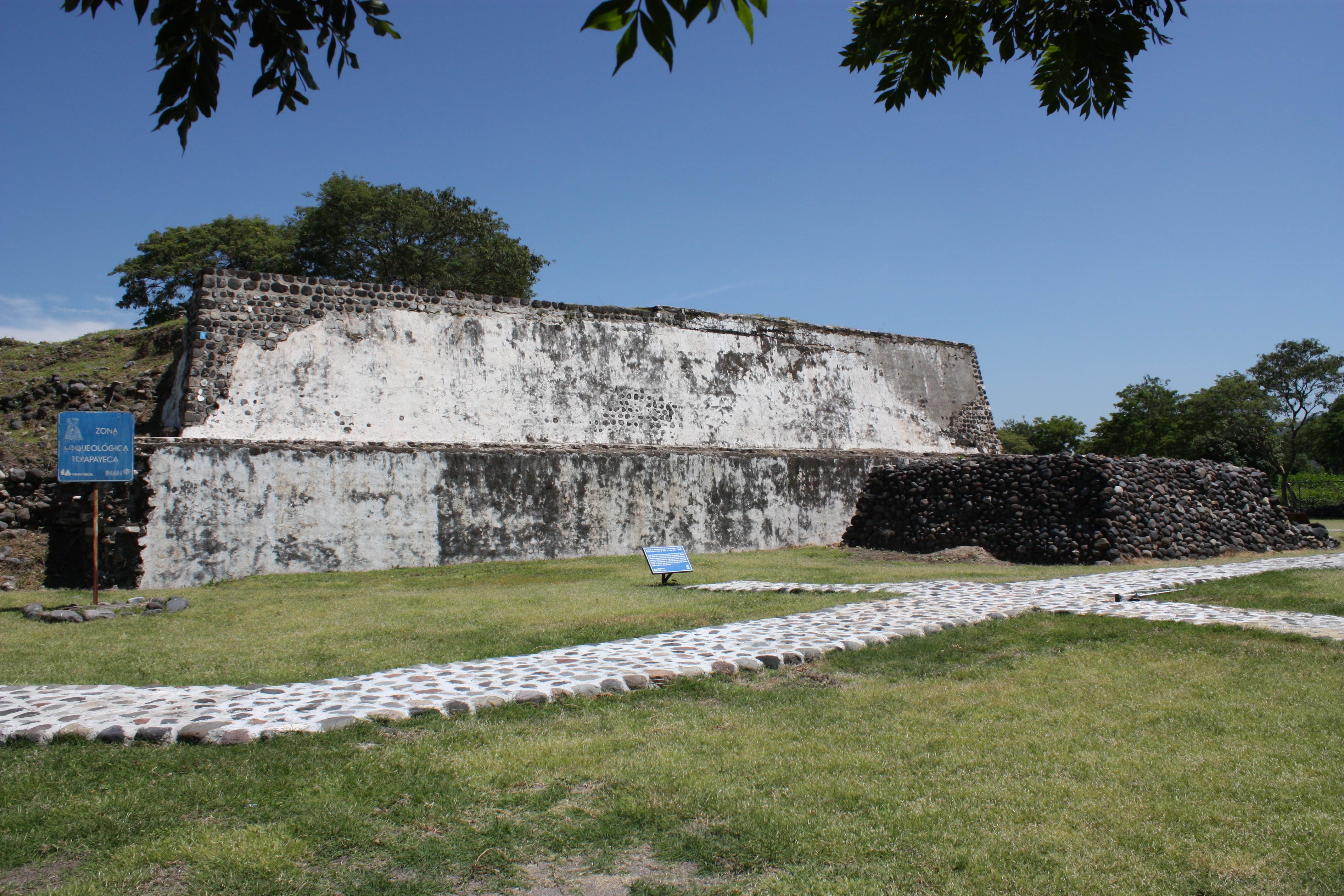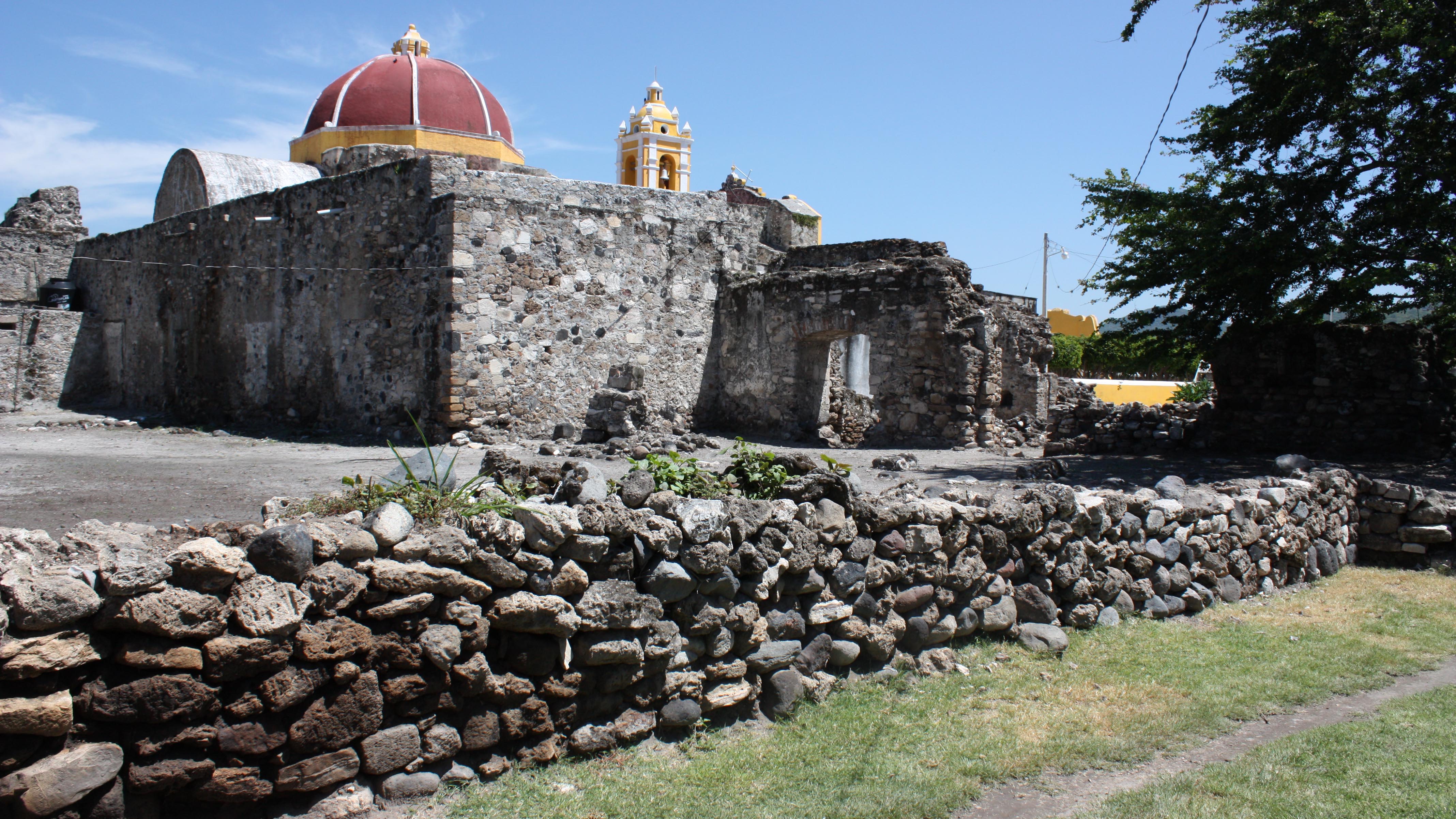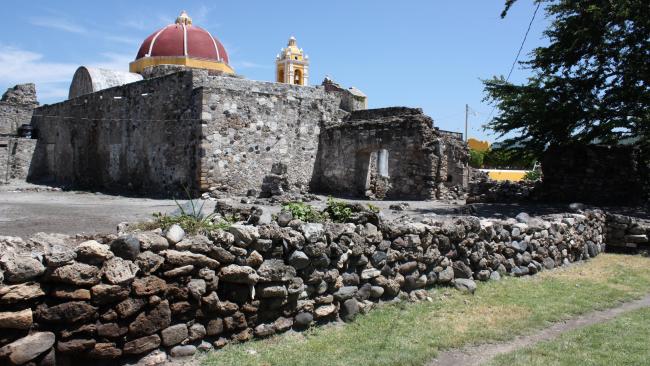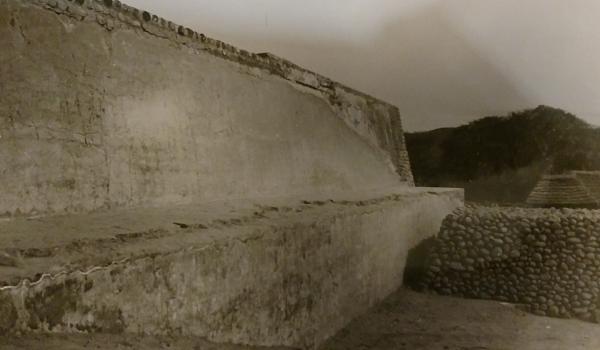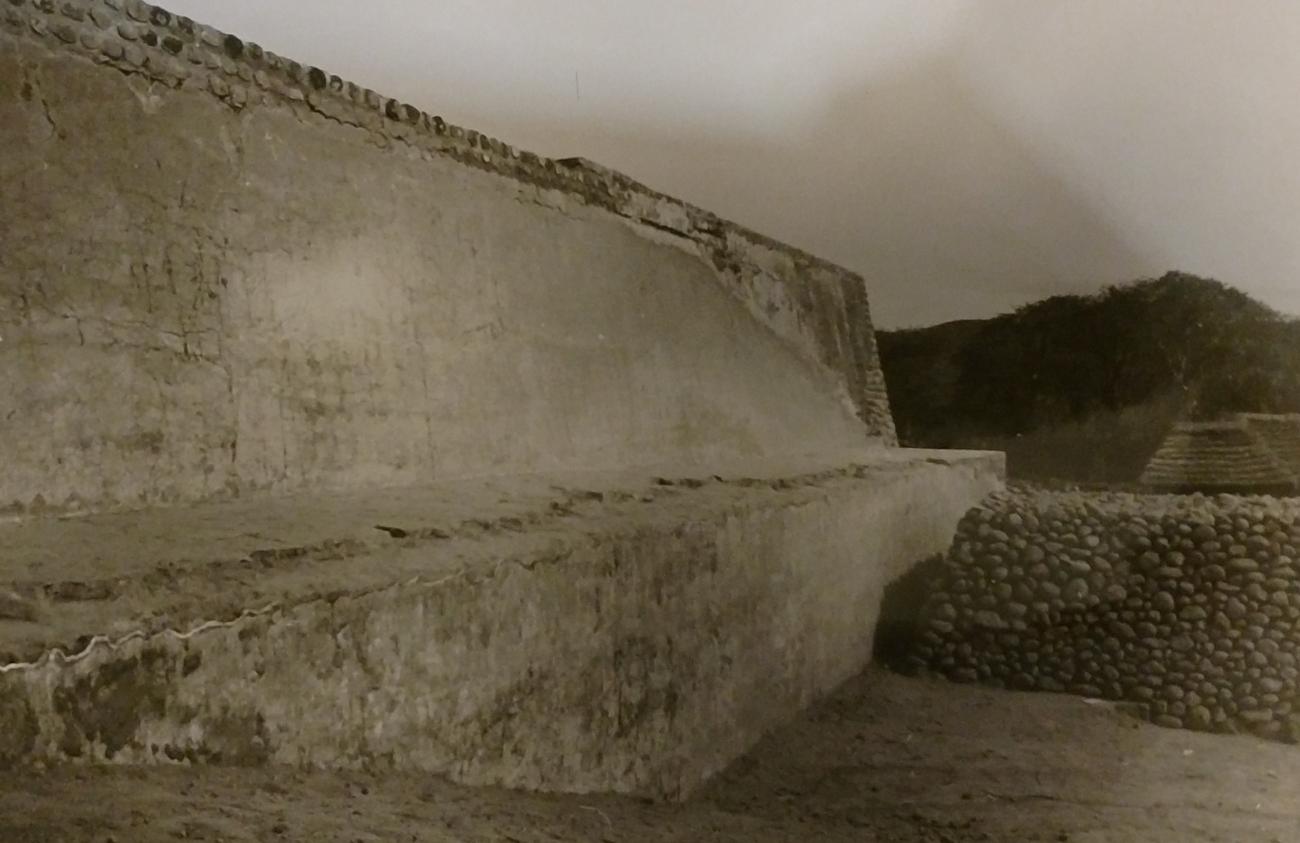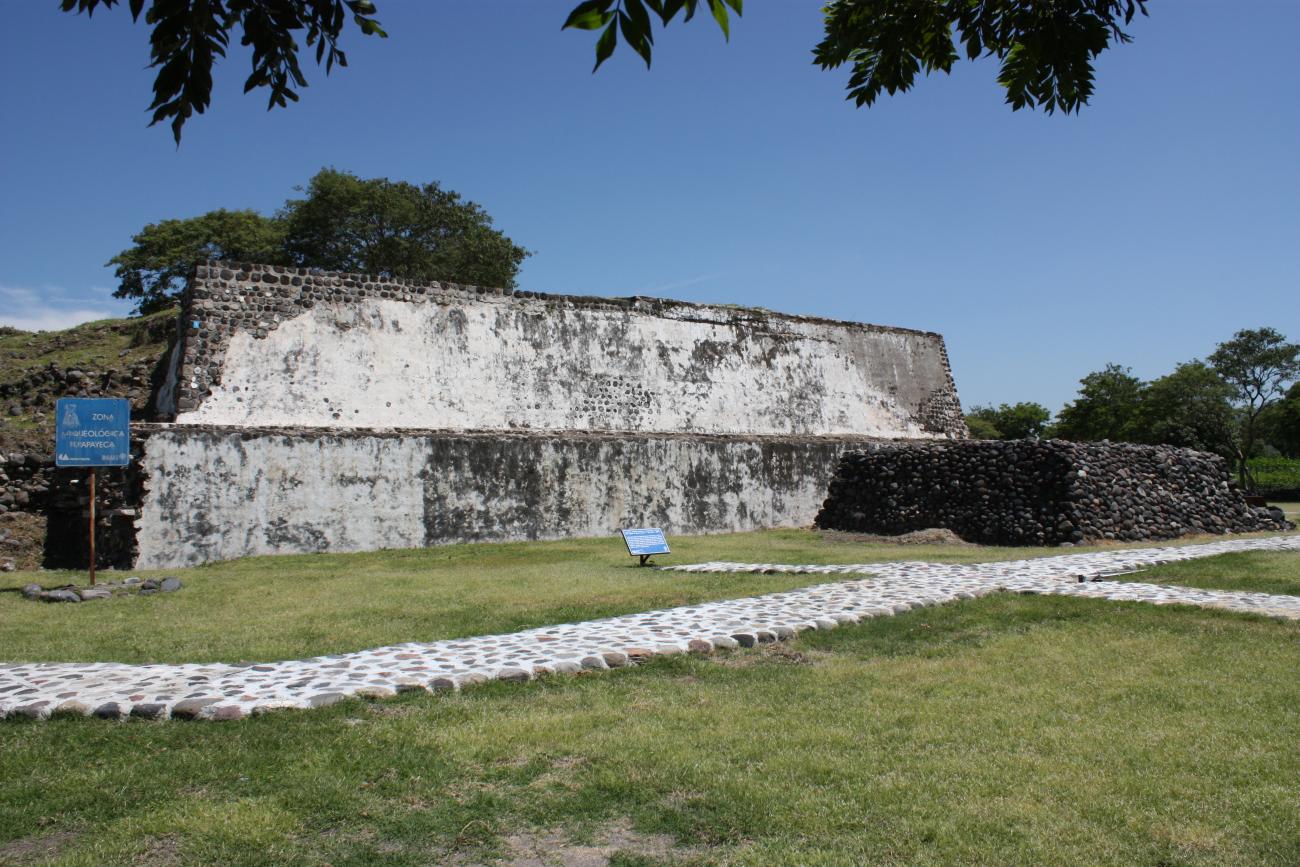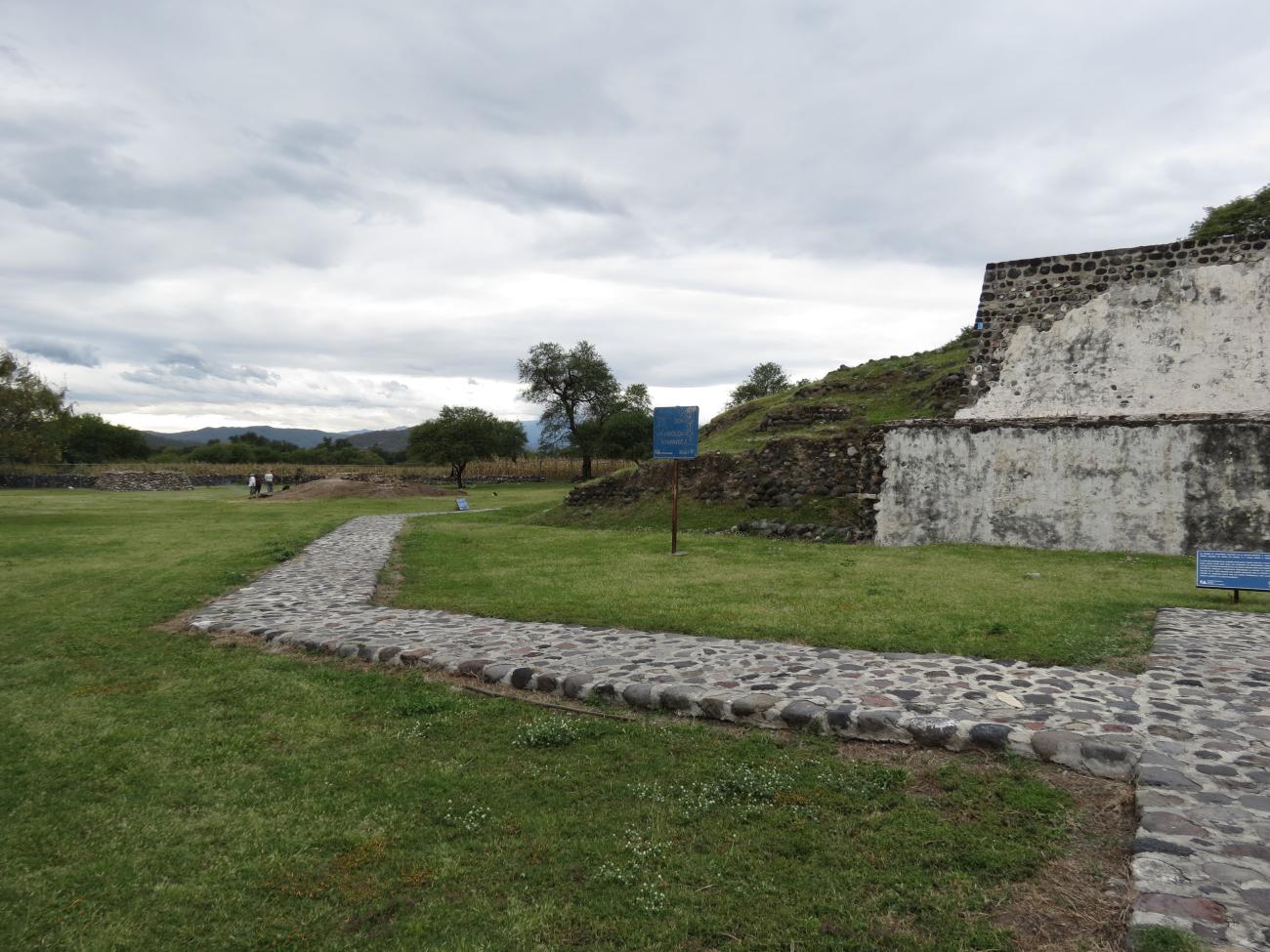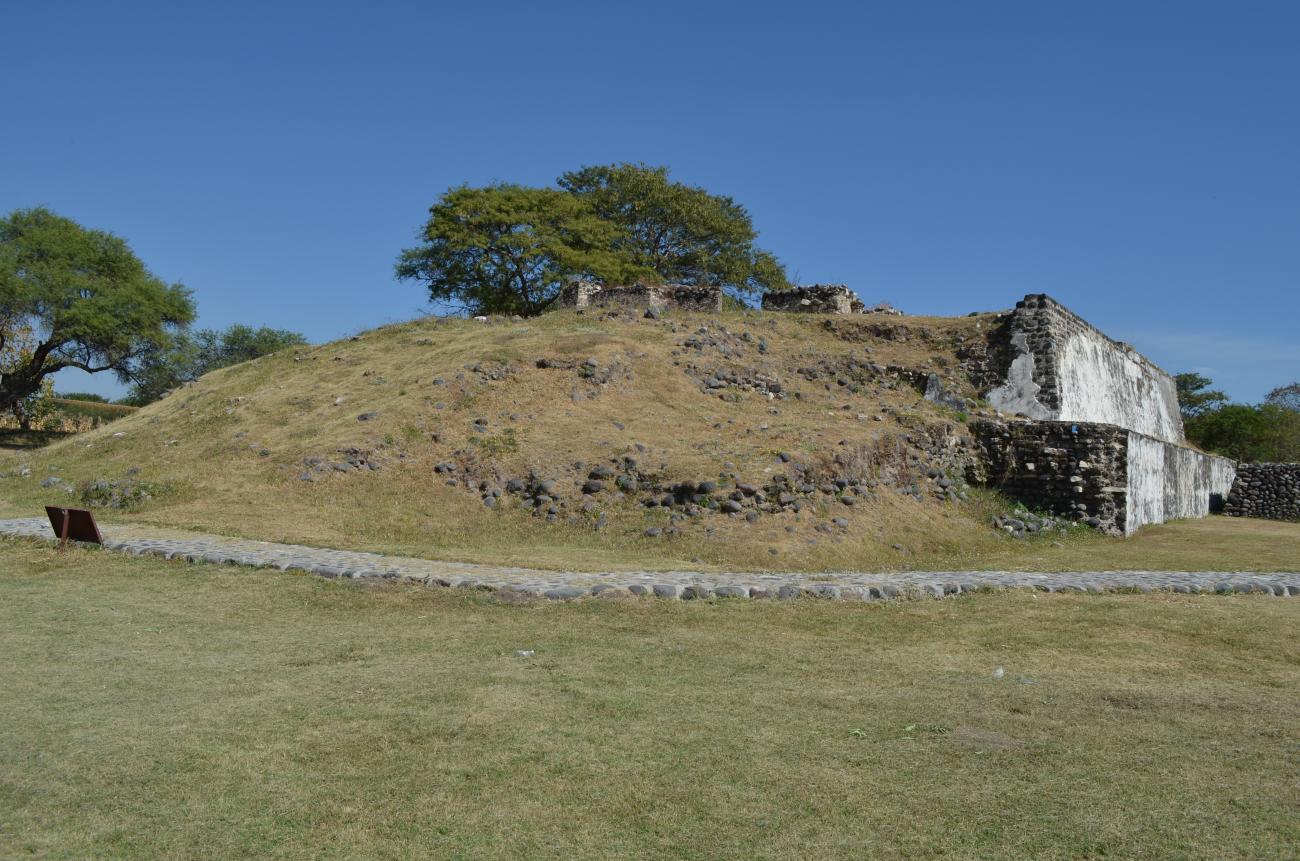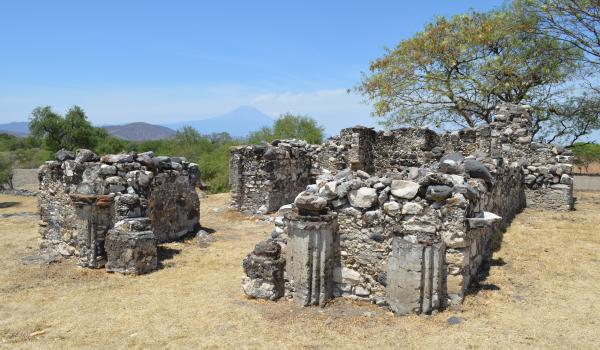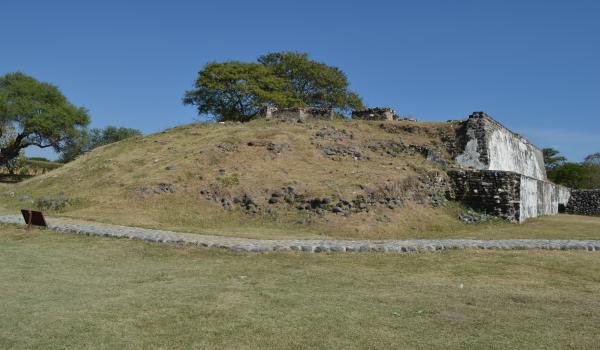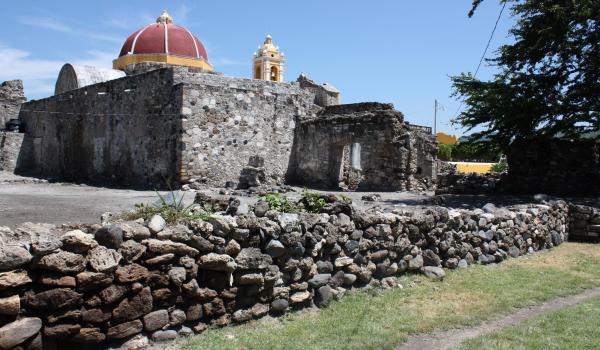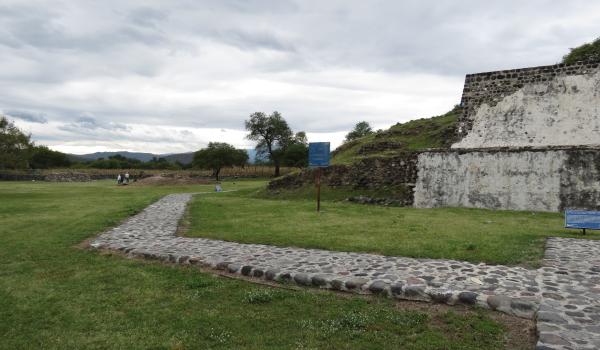The name Tepapayeca comes from the Nahuatl and means ‘area enclosed by stone walls’.
This site was occupied in the Late Postclassic period (1200-1521), although centuries earlier the zone had witnessed migrations that led to the consolidation of multiple alliances, while groups such as the Pame-Otomis, Mazatecs, Mixtecs and Popolocas penetrated the region.
Not long before the Conquest of Mexico, the site came under the sway of the Triple Alliance: Tenochtitlan, Texcoco and Tlacopan, with the aim of protecting a trade route of great importance, and to combat incursions by Mixtec groups that sought to assert dominance over the region. The Triple Alliance established a strong garrison at Huaquechula and Tepeojuma, which was assigned the task of putting down uprisings among the subjugated peoples.
In the ancient ceremonial center of Tepapayeca five buildings were constructed, of which today only the remains of the main temple can be seen. They were erected using river stones and mud, the walls clad with cut stone and finished with stucco. The pottery found at the site indicates a close relationship with the Mixtec people, as well as connections to the trade routes from the south-east and the Gulf of Mexico.
In the seventeenth century, with the larger platform already destroyed, the Dominicans built a chapel over the temple dedicated to acts of worship on Good Friday. During the Colonial period, it was common practice throughout Hispanic America to erect Christian religious buildings over former Indigenous sacred sites.

